





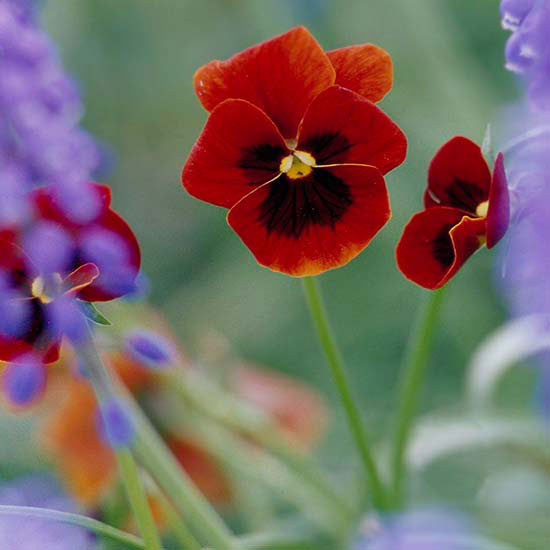
Gardeners in warmer Zones have long known that pansies can be planted in fall and continue to grow and bloom all winter and into spring. What isn't as well known is that pansies can overwinter as far north as Zone 4, making them hardy even in parts of the northern United States and southern Canada.
Many gardeners chafe at the idea of splurging for flowers that may not last more than a month in the ground. However, if planted in fall, pansies can last up to eight months, from September to April or May, providing fall and spring color. That's a pretty good deal.
Pansies aren't attractive in the middle of the coldest winters. In fact, they can look downright pitiful (when they're not buried under snow). But they're just biding their time until spring, when they hit their stride. The bonus for keeping them around is that the spring bloom is usually much more robust when the plants have been in the ground since fall.
Verbena is another fantastic annual.
continue reading below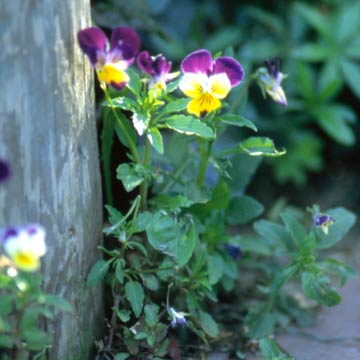 Viola tricolor is a relative ofthe pansy, and just as hardy.
Viola tricolor is a relative ofthe pansy, and just as hardy.
Pansies are viola hybrids, officially known as Viola x wittrockiana, with a complex ancestry that includes several species. They're short-lived perennials but are used as annuals or biennials. Similar to pansies and offered in garden centers at the same time are Johnny jump-ups (Viola tricolor) and Viola 'Jackanapes'. Both of these have hardiness similar to pansies.
Pansies come in Series that offer the same plant and flower characteristics but in a variety of bloom colors. This gives you great flexibility in working with flower color because you can buy individual colors of a series, if you wish, or a mix of colors from the same series.
Learn how to start pansies and other annuals from seed
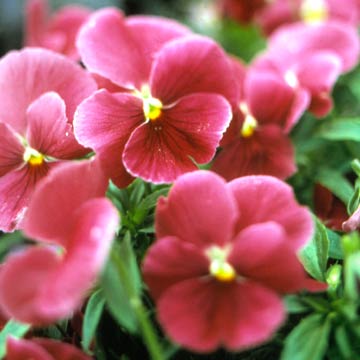 Some varieties of pansy, like'Raspberry Rose', shown here, haveveins instead of blotches.
Some varieties of pansy, like'Raspberry Rose', shown here, haveveins instead of blotches.
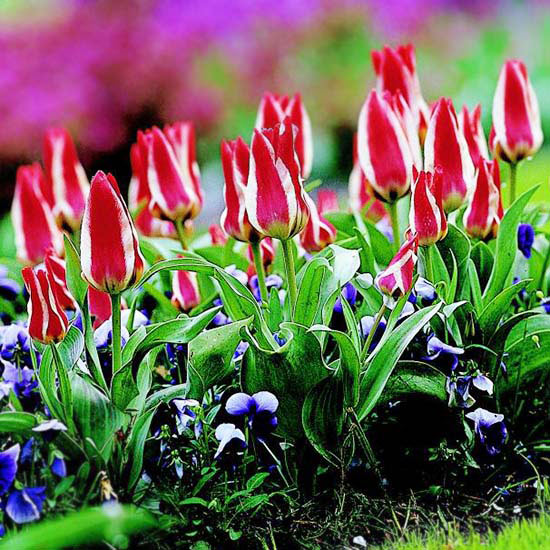
A technique gaining in popularity is to plant spring-blooming bulbs in fall in the usual fashion, then install pansies in the same bed, right over the bulbs. The bulbs will emerge and bloom as usual in spring. When their flowers die down, the pansies will just be starting their spring bloom, providing additional color while the bulb foliage ripens. This is a great way to get more color from your beds until it's time to plant summer annuals.
Pansies are perfect partners for other cool-season annual flowers, including:
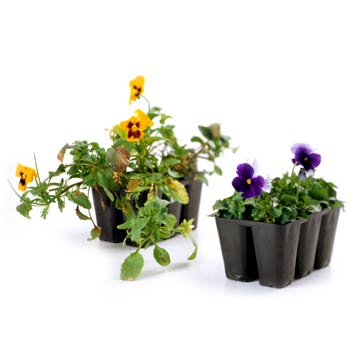 A healthy six-pack of pansies (right) are compact and fresh-looking. Avoid gangly or droopy plants (left).
A healthy six-pack of pansies (right) are compact and fresh-looking. Avoid gangly or droopy plants (left).
Pansies don't have a long shelf life in packs. They stretch out quickly, and once they do, they'll never do as well when planted. Garden centers often sell old, stretched out plants at a discount, but resist the temptation to buy them.
Healthy pansies are compact, exhibit minimal leaf yellowing, and probably show fewer blooms while in the packs because they're younger plants. Despite the lack of color at the time of purchase, these are the plants you want. When you find packs that look good, pop a few plants out and look at the roots. They should be white, not brown, and should be well developed throughout the soil plug.
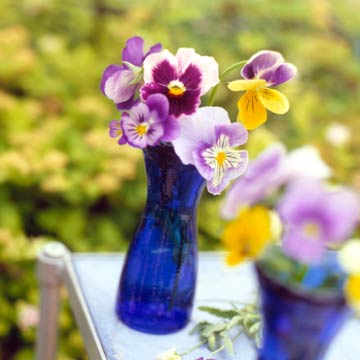 Cut pansies make a wonderful spring
bouquet. The flowers are edible
and add a spicy flavor to salads.
Cut pansies make a wonderful spring
bouquet. The flowers are edible
and add a spicy flavor to salads.
You'll find a better selection of healthy plants earlier in the fall season, so don't delay. September is the month that pansies begin to appear in nurseries in most regions. Many gardeners swear by field-grown pansies, which are sown outdoors and lifted into flats when ready for sale. Field-grown pansies are good plants but so are pack plants. For both, the same rules apply: Look for compact, healthy plants.
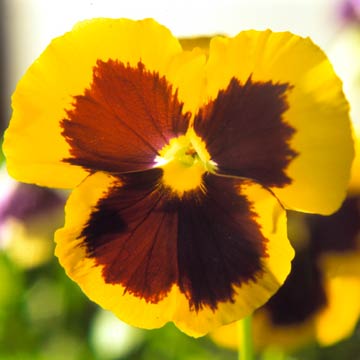
Pansies are not difficult to grow. Good soil, steady moisture, and at least partial sun will provide the results you're looking for. What they don't tolerate is heat and humidity, which is why they thrive in spring and fall.
Plant pansies 6 to 8 inches apart. They can be used as borders, or in larger masses, but don't count on a solid ground cover. The plants are more clumping than spreading. Pansies respond well to regular deadheading. As often as possible, every couple of days if you can, pinch off faded blooms and any fruit (small green seed capsules) that may be forming. This will spur plants to continue blooming.
 Pansies can become leggy in hot
weather. When that happens, don't
be shy about replacing them with
summer annuals.
Pansies can become leggy in hot
weather. When that happens, don't
be shy about replacing them with
summer annuals.
Fertility aids vigorous bloom. If you apply a mild fertilizer at fall planting and every four to five weeks in spring, it will ensure good nutrition for the pansies. Pests are not a major issue with pansies, but slugs and snails do count pansies amount their favorites, so control may be necessary from time to time. Aphids can also crop up occasionally. Leaf diseases, particularly mildews, are fairly common, and the occasional plant will die from root or crown rot, so take care not to bury the stems or crowns. Healthy plants and good growing conditions (ample sun, fertile soil, and good drainage) will keep pest problems to a minimum.
Heat causes pansies to become leggy and lose most of their bloom. So when summer warmth begins to get the upper hand, go ahead and remove pansies to make way for your summer annuals.
Coneflowers: How to Plant, Grow, and Care for Coneflowers
Cosmos: How to Plant, Grow, and Care for Cosmos
Impatiens: How to Plant, Grow, and Care for Impatiens
Petunias: How to Plant, Grow, and Care for Petunias
Yarrow: How to Plant, Grow, and Care for Yarrow
Copyright © www.100flowers.win Botanic Garden All Rights Reserved